“There are over 680 documented species of the sac fungus genus Ophiocordyceps, and one of the best known of these is Ophiocordyceps sinensis, colloquially known as caterpillar fungus. The fungus is known in Tibetan as yartsa gunbu or yatsa gunbu.
O. sinensis is known in the West as a medicinal mushroom and its use has a long history in Traditional Chinese medicine as well as Traditional Tibetan medicine. The highly valuable fungus-caterpillar combination is hand-collected and is used as an aphrodisiac and as a treatment for a variety of ailments from fatigue to cancer.
The caterpillars prone to infection by the fungus live underground in alpine grass and shrublands on the Tibetan Plateau and the Himalayas at an altitude between 3,000 and 5,000 m (9,800 and 16,000 ft). Spending up to five years underground before pupating, the Thitarodes caterpillar is attacked while feeding on roots. It is not certain how the fungus infects the caterpillar; possibly by ingestion of a fungal spore or by the fungus mycelium invading the insect through one of its breathing pores. The fungus invades the body of the caterpillars, filling its entire body cavity with mycelia and eventually killing and mummifying it. The caterpillars die near the tops of their burrows. The dark brown to black fruiting body (or mushroom) emerges from the ground in spring or early summer, always growing out of the forehead of the caterpillar. The long, usually columnar fruiting body reaches 5–15 cm above the surface and releases spores.
Assays have found that Ophiocordyceps species produce many pharmacologically active substances. They are now cultivated on an industrial scale for their medicinal value. However, no one succeeded so far growing the larva cum mushroom artificially. All artificial products are derived from mycellium grown on grains or in liquids.
The Western world was largely unaware of Ophiocordyceps prior to 1993. The fungus dramatically caught the world's eyes due to the performance of three female Chinese athletes, Wang Junxia, Qu Yunxia, and Zhang Linli. These athletes broke 5 world records for 1,500, 3,000 and 10,000 meters at the National Games in Beijing, China. The number of new world records being set at a single track event attracted much attention and suspicion. Following the races the women were expected by some to fail drug tests for anabolic steroids. However, the athletes' tests revealed no illegal substances, and coach Ma Junren told the reporters that the runners were taking Ophiocordyceps sinensis and turtle blood at his request.
In rural Tibet, yartsa gunbu has developed to become the most important source of cash income. The fungi contributed 40% of the annual cash income to local households and 8.5% to the GDP in 2004. Prices have increased continuously, especially since the late 1990s. In 2008, one kilogram traded for US$3,000 (lowest quality) to over US$18,000 (best quality equalling the largest larvae). The annual production on the Tibetan Plateau is estimated at 100–200 tons. The Himalayan Ophiocordyceps production might not exceed a few tons.
The search for Ophiocordyceps sinensis is often perceived to pose a threat for the environment of the Tibetan Plateau where it grows. While it has been collected for centuries and is still common in such collection areas, current collection rates are much higher than in historical times”. – Wikipedia
O. sinensis is known in the West as a medicinal mushroom and its use has a long history in Traditional Chinese medicine as well as Traditional Tibetan medicine. The highly valuable fungus-caterpillar combination is hand-collected and is used as an aphrodisiac and as a treatment for a variety of ailments from fatigue to cancer.
The caterpillars prone to infection by the fungus live underground in alpine grass and shrublands on the Tibetan Plateau and the Himalayas at an altitude between 3,000 and 5,000 m (9,800 and 16,000 ft). Spending up to five years underground before pupating, the Thitarodes caterpillar is attacked while feeding on roots. It is not certain how the fungus infects the caterpillar; possibly by ingestion of a fungal spore or by the fungus mycelium invading the insect through one of its breathing pores. The fungus invades the body of the caterpillars, filling its entire body cavity with mycelia and eventually killing and mummifying it. The caterpillars die near the tops of their burrows. The dark brown to black fruiting body (or mushroom) emerges from the ground in spring or early summer, always growing out of the forehead of the caterpillar. The long, usually columnar fruiting body reaches 5–15 cm above the surface and releases spores.
Assays have found that Ophiocordyceps species produce many pharmacologically active substances. They are now cultivated on an industrial scale for their medicinal value. However, no one succeeded so far growing the larva cum mushroom artificially. All artificial products are derived from mycellium grown on grains or in liquids.
The Western world was largely unaware of Ophiocordyceps prior to 1993. The fungus dramatically caught the world's eyes due to the performance of three female Chinese athletes, Wang Junxia, Qu Yunxia, and Zhang Linli. These athletes broke 5 world records for 1,500, 3,000 and 10,000 meters at the National Games in Beijing, China. The number of new world records being set at a single track event attracted much attention and suspicion. Following the races the women were expected by some to fail drug tests for anabolic steroids. However, the athletes' tests revealed no illegal substances, and coach Ma Junren told the reporters that the runners were taking Ophiocordyceps sinensis and turtle blood at his request.
In rural Tibet, yartsa gunbu has developed to become the most important source of cash income. The fungi contributed 40% of the annual cash income to local households and 8.5% to the GDP in 2004. Prices have increased continuously, especially since the late 1990s. In 2008, one kilogram traded for US$3,000 (lowest quality) to over US$18,000 (best quality equalling the largest larvae). The annual production on the Tibetan Plateau is estimated at 100–200 tons. The Himalayan Ophiocordyceps production might not exceed a few tons.
The search for Ophiocordyceps sinensis is often perceived to pose a threat for the environment of the Tibetan Plateau where it grows. While it has been collected for centuries and is still common in such collection areas, current collection rates are much higher than in historical times”. – Wikipedia
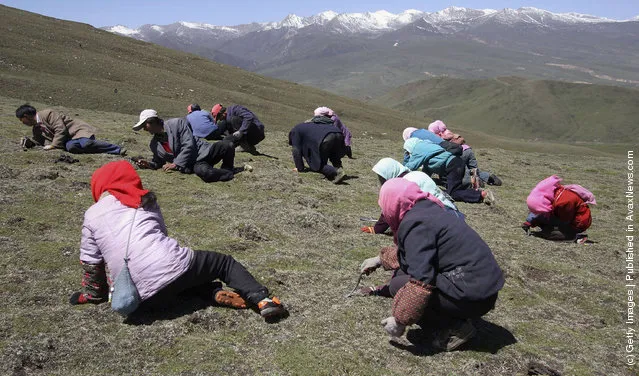

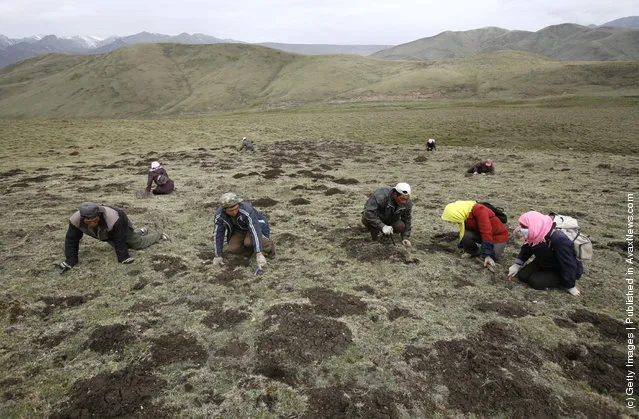
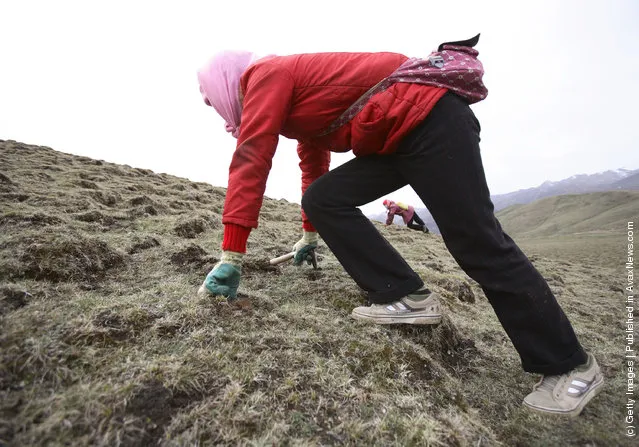
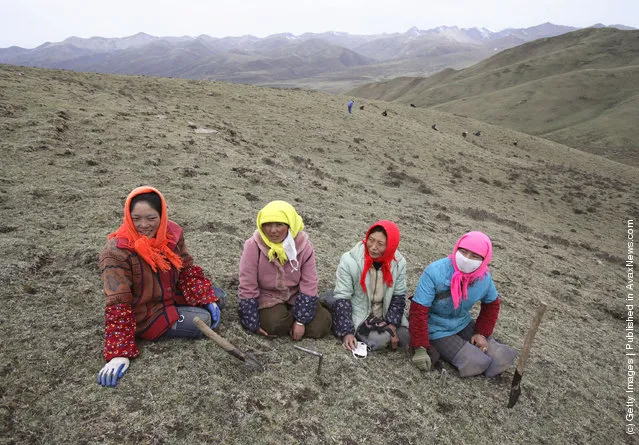
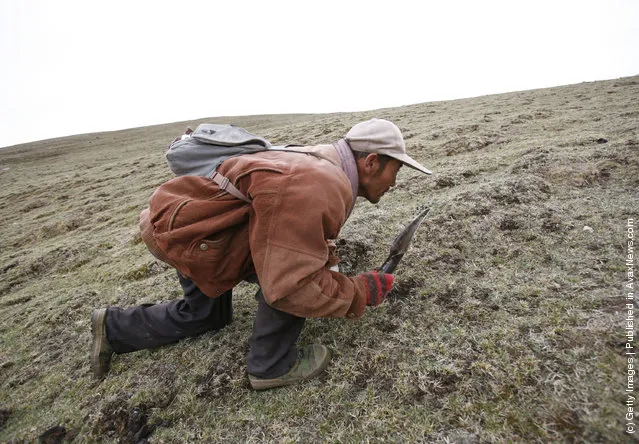
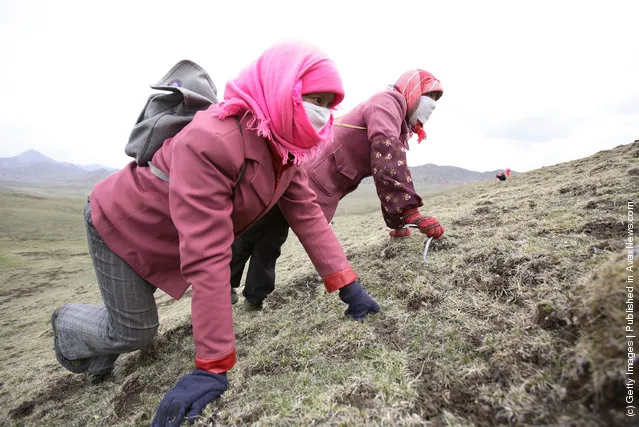
Nomads dig for Chinese caterpillar fungus from a mountain May 25, 2007 in Guide County, Hainan Prefecture, Qinghai Province, China. Nomads can earn about 2,000 yuan to 5,000 yuan (about U.S. $260 to $653 ) through their work during the fifty-day Chinese caterpillar fungus gathering season. (Photo by China Photos/Getty Images)
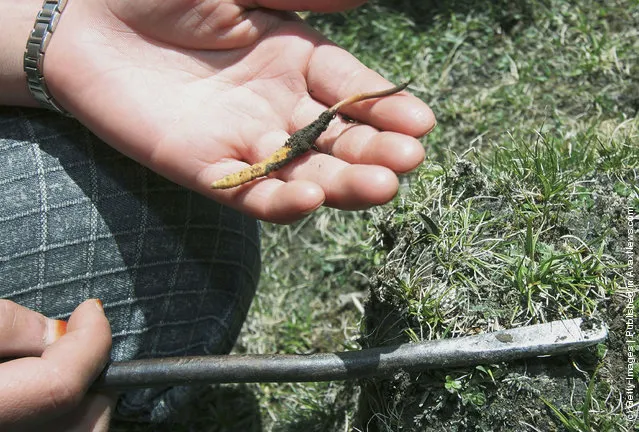
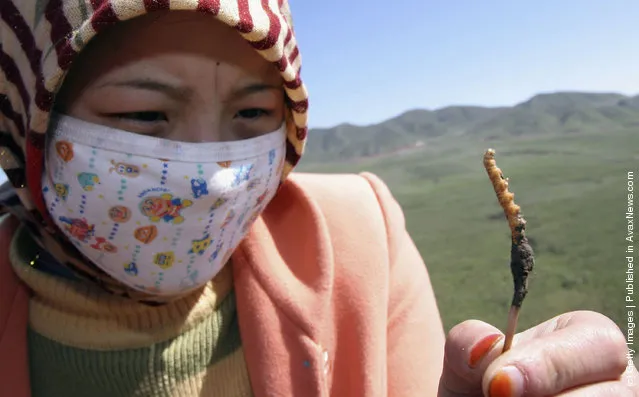
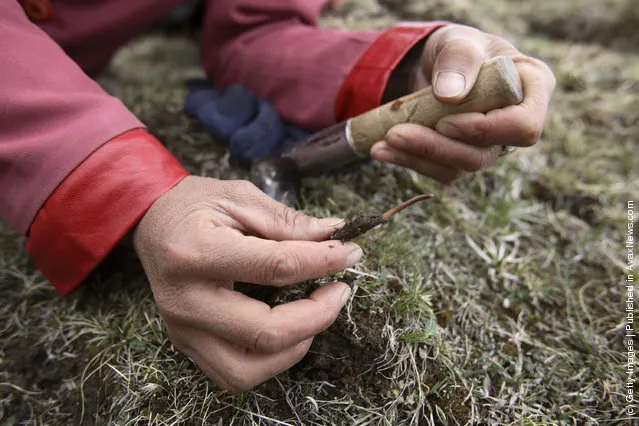
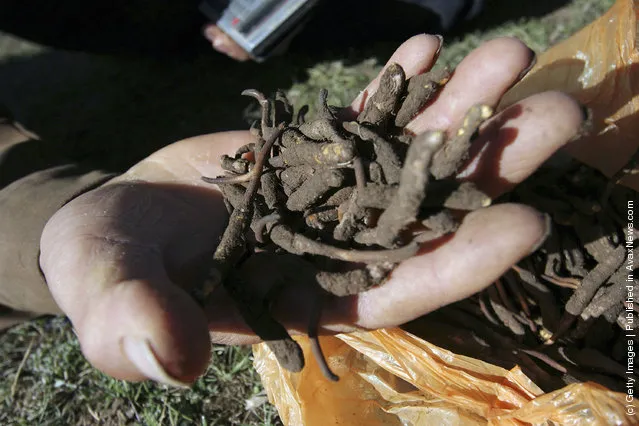
A nomad displays the Chinese caterpillar fungus they dug at a mountain on June 7, 2005 in Guide County of Qinghai Province, China. (Photo by China Photos/Getty Images)
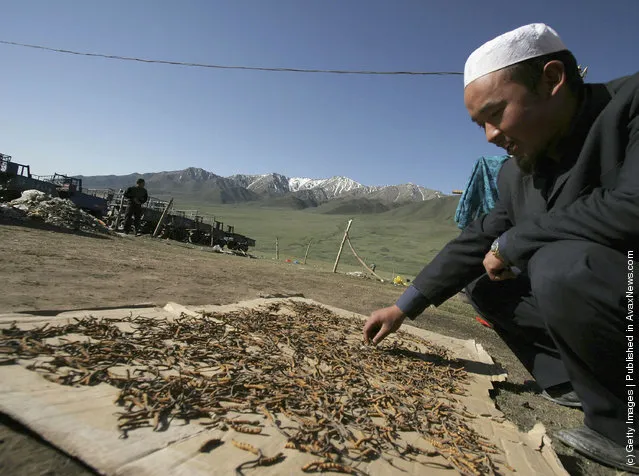

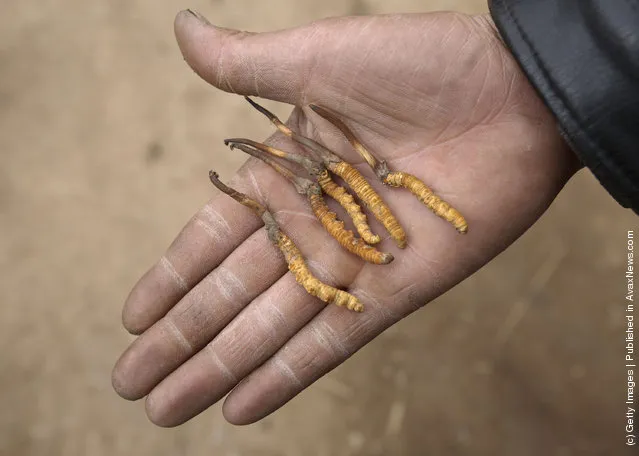

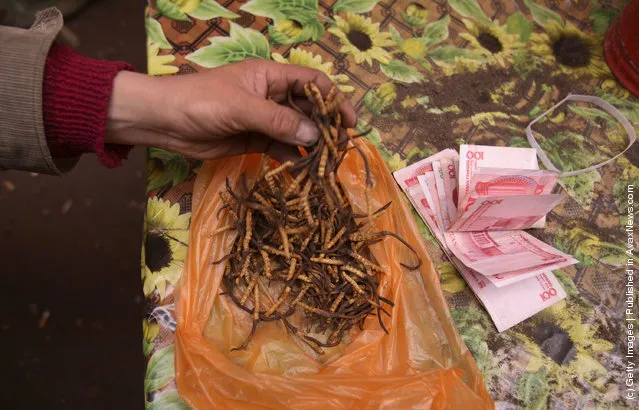
A monger holds Chinese caterpillar fungus he bought from nomads May 25, 2007 in Guide County, Hainan Prefecture, Qinghai Province, China. Chinese caterpillar fungus, about U.S. $600 per pound, is also called Cordyceps Sinensis Mushroom. The fungus multiples by parasitizing insect larvae, forming hypha and maturing outside the larva. The fungus exists in mountains and meadows with an altitude of 9,840 to 16,400 feet. Caterpillar fungus is highly valued in Chinese medicine and used in drugs to restore energy, promote longevity and stimulate the immune system, however, because of excessive exploitation, the Chinese caterpillar fungus resource has been destroyed and has become increasingly rare. The Chinese government has restricted the digging of the fungus. (Photo by China Photos/Getty Images)
26 Sep 2011 10:47:00,
post received
0 comments
